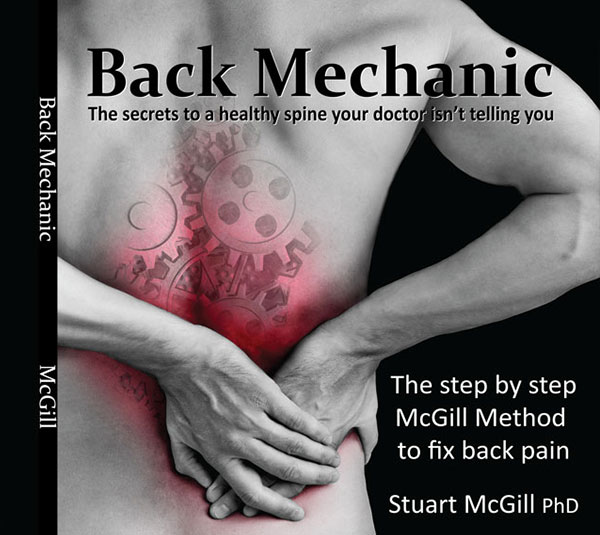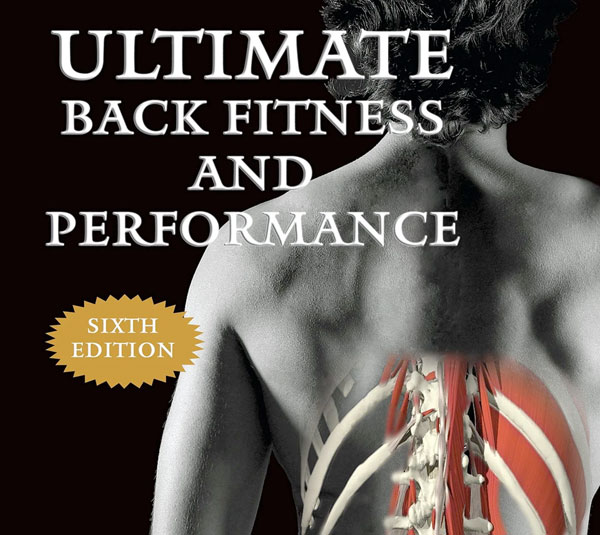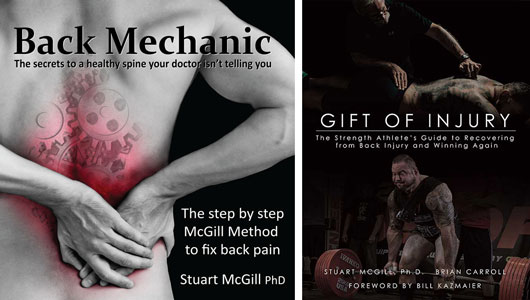07 May Brian Carroll Coaches the curl-up
Brian Carroll Coaches the curl-up
ANOTHER MCGILL BIG 3 POST? Yes, I give a demo of how to do, in most cases, the most commonly badly misrepresented exercise: the McGill curl-up. For more context on the curl-up, please check out Back Mechanic and Gift of Injury for regressions and progressions. This is only the tip of the iceberg, and particular coaching cues I used for this session are as follows:
 Most of you will be able to follow along with this video and have no issues once you see the primary cues hammered consistently:
Most of you will be able to follow along with this video and have no issues once you see the primary cues hammered consistently:
1. One leg bent, one leg straight
2. Hands under the small of the back, elbows off the ground
3. Minimal head movement and leg movement
4. Play with stiffness – pushing out laterally
More curl-up Context and Coaching
Over the last 11 years, many have made this exercise much more complicated than it needs to be. Including me, in the first year or so after being introduced. Instead of slowly cueing it, they turn it into a traditional curl-up. The best advice I can offer you is to slow down and follow along with the video. I have learned that those who train their anterior core, as mentioned in the last post, i.e., some bodybuilders and powerlifters, have no problem with this exercise, while others have been pained so long that they have no core strength or endurance.
The main flaw I see with the McGill curl-up is too much spine motion. This is an isometric exercise, not a bending exercise, especially not a repetitive bending exercise — very little motion should happen, and this should be held for time. This will depend on the goal and capacity of the athlete or person. Lower the head and check your neck/chin position if in doubt. Do NOT put your hands behind your head. If you are doing the curl-up by the book according to Back Mechanic or Gift of Injury and are still experiencing neck pain, please see page 104 of Back Mechanic to address neck strategy and prehab. Like any other exercise, execution, tuning, and modifications will be necessary for each individual due to various moving parts and limitations.
BONUS: In this video (briefly), I briefly discuss power breathing, but a little more in-depth than in the last video. This needs its article and context. Why? Depending on the goal, you should be more forceful (for performance), while at other times, for recovery, you would likely not try to create so much tension, stiffness, and IA pressure as someone training for a world record. Everything must be adjusted and tuned to achieve a specific goal for each individual. For those backs pained with compressive forces, we should consider less stiffening in some cases, specifically the abdominal region. But, as I say, this needs an entire article, or better yet, read more about the nuance here: Ultimate Back Fitness and Performance 6th ED.
Brian offers Virtual & in-person coaching
Back Injured Average Mary or Joe who wants their life back
Back Injured Athlete Wanting to Return to Sport
Lift and exercise coaching & cueing to troubleshoot form
Program adherence & accountability coaching
Nutrition & Supplementation Coaching & Guidance (10 or 20 weeks)
Brian Carroll
Latest posts by Brian Carroll (see all)
- Quick Rant: Core Exercises - July 26, 2024
- Physical Therapy Fails for Back Pain - July 25, 2024
- Quick Rant: Physical Therapists - July 19, 2024








Sorry, the comment form is closed at this time.